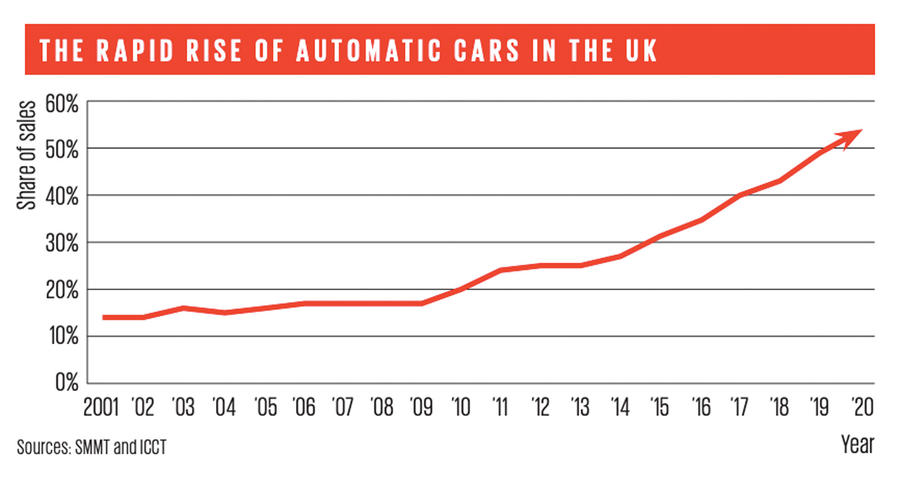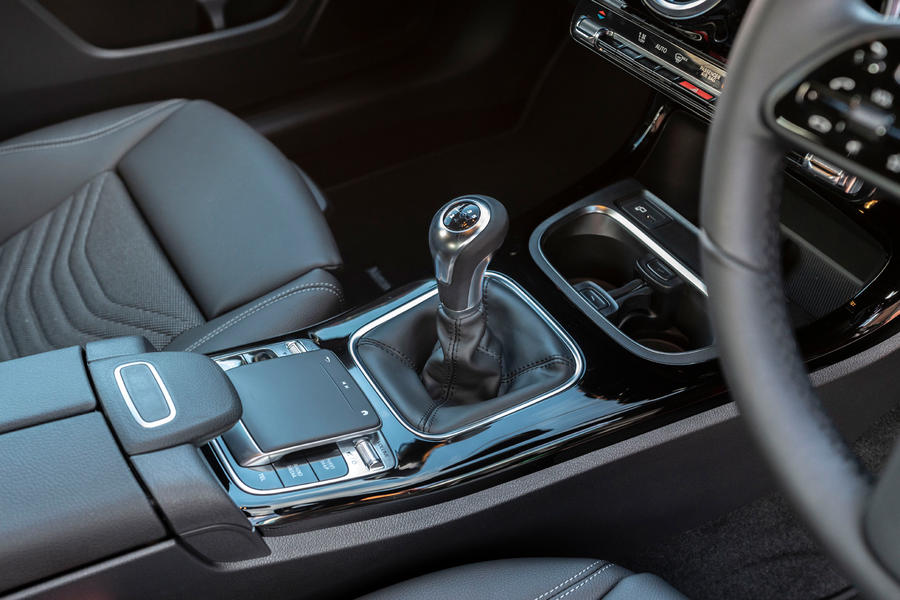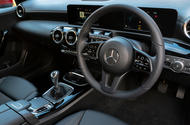Most cars sold in the UK now are automatic. We examine what future there is for stick-shifters
The UK car market reached a significant markstone in the first nine months of this year: it was the first time that we had bought more cars with automatic gearboxes than manual gearboxes.
The slow demise of manuals has been showing in sales data for a while, but the trend has spiked markedly in the past three years. It also coincides with an announcement earlier this month of the first major European car maker to stop producing manual gearboxes altogether.
Mercedes-Benz confirmed that it will do this as part of a cost-cutting initiative that also includes drastically reducing its range of combustion engines. Manuals will be phased out between now and 2030, according to a spokesman.
Mercedes now offers manuals only in its compact models, which include the A-Class and GLA, and the C-Class. We expect next year’s new-generation C-Class to drop the manual option entirely. Manuals have long been held in affection by enthusiasts for providing an important physical connection between driver and car. In the past, they also provided better fuel economy than traditional torque converters, and they’re certainly cheaper to produce.
Now the broader demand for easy-to-use technology and the rise of the dual-clutch automatic gearbox, with its precise driver control, are elbowing out the manual. “An automatic is becoming another feature that’s taken for granted in a car, like electric windows,” said Felipe Munoz, an analyst at market researcher Jato Dynamics.

Automatics accounted for 54% of UK new-car sales in the first nine months of this year, according to figures from the Society of Motor Manufacturers and Traders, breaking the 50% barrier for the first time. Last year, automatics accounted for 49% of sales, up from 43% in 2018. A decade ago, they took only a fifth of sales.
The shift to electrified drivetrains is one big reason for this – something that becomes clear when you look at the top five automatic cars sold this year, according to Jato data. In first is the BMW 3 Series, which is also the leading plug-in hybrid (in 330e form), and in second is the electric Tesla Model 3. Third and fourth are hybrid-only Toyotas, the Corolla and C-HR, while the Mercedes-Benz A-Class in fifth is also the third most popular plug-in hybrid (in A250e form).
As manufacturers race to cut CO2 emissions, manuals become casualties. A manual is no longer the most economical option when a computer can time the shifts to achieve the least fuel consumption. New Volkswagen Group cars fitted with mild-hybrid technology, including the Seat Leon and Volkswagen Golf, are available only with a dual-clutch ’box.
Automatics are easier to set up for economy, according to Seat vehicle development boss Marcus Keith. “To do a manual is more time-consuming, because you need to take into account the gearchanges of customers,” he told Autocar. “The product team said no, because we’re selling quite a lot of automatics now.”
An automatic also allows the addition of ‘eco-innovation’ technology, such as off-throttle coasting, which earns precious credits under the European Union’s stringent new CO2 regulations. Automatics also allow more semi-autonomous capabilities – for example, the traffic-creeping function.

Not every firm has given up on manuals, though. Kia has found a way to keep it while also introducing mild-hybrid tech and a coasting function. Its clutch-by-wire Intelligent Manual Transmission, available initially on the Ceed and Rio, uses the 48V starter-generator to restart the engine after coasting while keeping the driver’s selected gear.
Premium brands are among those shedding the manual fastest. Only 10% of cars Volvo sold in the UK this year up to the end of September were manuals. It dropped its manual option for the V60 earlier this year so now offers it only on the T2 and T3 variants of the XC40. Mercedes was already selling fewer manuals than anyone else. Its automatic share was a whopping 82% across Europe in 2018, with Volvo next at 78%, according to International Council on Clean Transportation (ICCT) data.
Countries where premium cars take more sales ditched manuals long ago. In Luxembourg, for instance, 90% of cars sold in 2018 were automatic, according to the ICCT, while in Switzerland it was 74% and in Sweden 73%.
Manuals will survive longer in budget cars, due to their lower production cost. The Ford Fiesta was the best-selling manual in the first nine months of 2020 in the UK, according to Jato, followed by the Vauxhall Corsa. Across Europe, just 3% of Dacia sales were automatic in 2018, while it was 6% for Fiat and 14% for Opel and Vauxhall. Manuals are often thought of as the driver’s choice for sports cars, but they’re losing ground there, too. BMW won’t offer a manual version of its new M4 Coupé in the UK, yet will in the US – a country where manuals took just 1.1% of sales last year, according to JD Power.
One outlier is Audi. While the premium brand is moving fast into electrification and offers manuals on only five cars (the largest being the Q3), 75% of its UK sales in 2020 have been manuals. It might be that an automatic ’box is an option too far when people are stretching to afford an Audi, but it shows that manuals will still be around for a good number of years yet.
Nick Gibbs
READ MORE
Shift work: 10 of the greatest manual cars
Mercedes to ‘eliminate’ manual gearboxes and cull ICE powertrains
Source: Autocar
